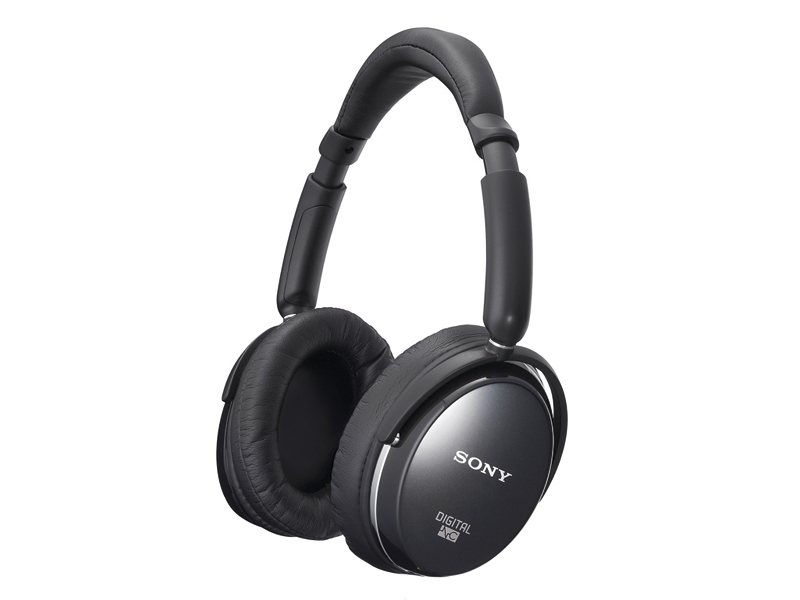The clever sound tech behind Sony's new headphones

Unwanted noise might have been a blight of audio playback back in pre-digital days, but today few people expect that their enjoyment of audio will be marred by hiss and crackle.
This doesn't mean that the nuisance of unwanted noise is long gone, though; far from it. As our electronic equipment has become ever more portable, we've found ourselves subjected to a different but no less annoying form of noise.
From the rattle of a train and the rumble of jet engines to the chatter of our fellow passengers, ambient noise can make listening to music on an MP3 player or watching a movie on a laptop a far-from-enjoyable experience.
The easy solution is just to turn up the volume, but you then run the risk of harming your hearing and annoying those around you. A far better solution to the problem is to use headphones that are designed to prevent background noise from reaching your ears.
The technique of active noise cancellation (ANC) is not new. In conventional feedback-type ANC headphones, a tiny microphone in the ear cup samples what the ear will hear, background noise and all.
The audio signal into the headphones is then subtracted from the signal out of the microphone, leaving an error signal that corresponds to the amount of noise that will be heard. This error signal is then used to control circuitry that processes the audio signal in such a way that the error signal is minimised.
In the simplest of cases, this is achieved by adding 'anti-noise' – in other words, noise that is phase shifted by 180 degrees and will, therefore, cancel out the ambient noise. In practice, though, the time delay caused by the action of the control circuitry means that noise cancellation will never be perfect.
Sign up for breaking news, reviews, opinion, top tech deals, and more.
This type of feedback ANC can employ either analogue electronics or digital signal processing. Sophisticated digital techniques can also be used for the alternative feed-forward type of ANC, which is more effective than feedback ANC for continuous or repetitive noise.
Here, a microphone on the outside of the headphones samples the noise before it reaches the ear and uses this noise signal to generate the necessary anti-noise.
However, because by its very nature continuous or repetitive noise is constant and predictable, it's possible to totally eliminate the timing errors that reduce the effectiveness of feedback ANC – thus cancelling out the advantage of using feed-forward ANC in the first place.
Passive cancellation
Even with the advantages offered by digital signal processing, ANC is good at cancelling low-frequency noise such as hums and rumbles, but not high-frequency noise such as hiss or squeaks.
This is because the wavelength of sound is shorter at high frequencies, resulting in the microphone often being a significant proportion of a wavelength – or even several wavelengths – from the ear.
The noise received by the microphone will, therefore, be phase shifted compared to the noise at the ear, and the amount of that phase difference will differ with the frequency and the direction of the noise.
Because ANC involves using phase shifting to generate the anti-noise, the presence of an unpredictable additional phase shift can get in the way of the process and reduce its effectiveness.
As a result of this, many ANC headphones also feature something referred to as passive noise cancellation – in other words, lots of padding to muffle high-frequency noises.
For this reason, the most effective ANC headphones are circum-aural (that is, they totally surround the ear) or at least supra-aural (sit on top of the ear), rather than the compact intraaural type (fit inside the ear) that are popular for use with portable MP3 players because of they weigh so little.
Intra-aural ANC headphones are available, but they tend not to offer the same degree of isolation from noise as the other types, especially with high-frequency sounds.
-------------------------------------------------------------------------------------------------------
First published in PC Plus Issue 284
Now check out TechRadar's Sony MCR-NC500D headphones review
Sign up for TechRadar's free Weird Week in Tech newsletterGet the oddest tech stories of the week, plus the most popular news and reviews delivered straight to your inbox. Sign up at http://www.techradar.com/register